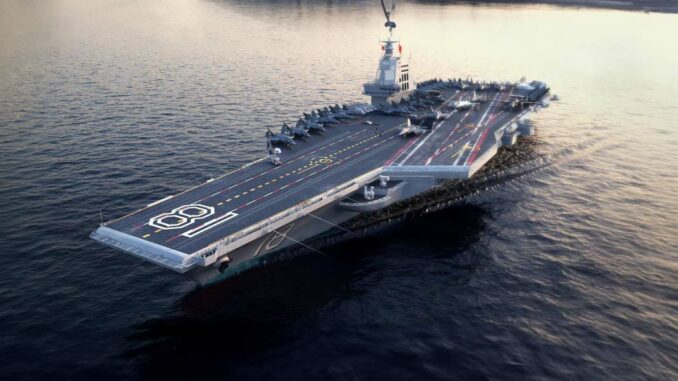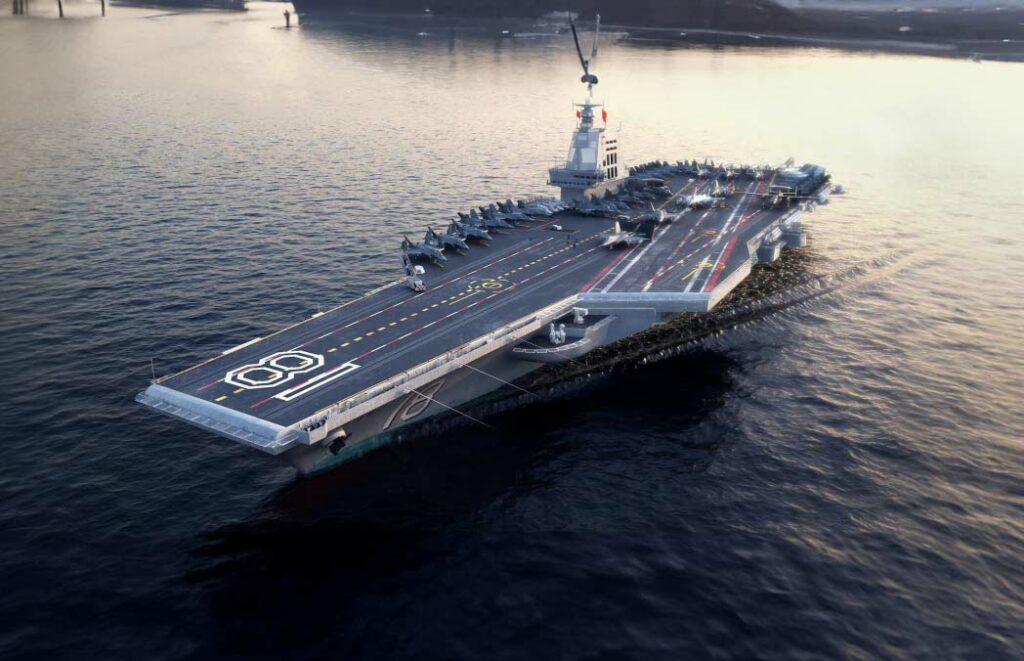
Analysis of the new Sino-American naval dynamic with the launch of the Chinese aircraft carrier Type 003, altering the balance in the Pacific.
In today’s geopolitical theater, the rise of China’s maritime power raises crucial questions. In June 2023, the intensification of Sino-American tensions in the Taiwan Strait highlighted China’s naval strategy, embodied by the launch of its new aircraft carrier, the Type 003 Fujian. This event not only marks a turning point in the modernization of the Chinese navy, but also reshapes the balance of power in one of the world’s most strategic maritime corridors. This article explores in depth the technical, strategic and geopolitical implications of this development.
The Type 003 Fujian: A Symbol of Chinese Naval Power
The Type 003 Fujian, with a length of over 300 meters and a beam of approximately 75 meters, ranks among the world’s largest aircraft carriers. Unlike American Ford-class aircraft carriers, powered by nuclear reactors, the Fujian uses steam turbines generating 220,000 horsepower, requiring more frequent refueling. A key point is the increased launch capability provided by its electromagnetic catapult system, enabling the rapid deployment of heavy fighter aircraft. This development signals a significant evolution in China’s offensive capabilities at sea, with a planned capacity of 60 aircraft, including up to 40 fighters.
The rise of China and the American response
The construction of the Type 003 is part of a wider dynamic of Chinese naval expansion, aimed at challenging American maritime supremacy. With over 340 warships, the People’s Liberation Army (PLA) navy today represents the world’s largest navy. At the same time, the USA continues to modernize its fleet with the Gerald R. Ford class of supercarriers, the first of which, the USS Gerald R. Ford, was commissioned in May 2023. These developments are taking place against a backdrop of heightened tensions in the Taiwan Strait, a strategic zone through which 21% of the world’s trade passes.

A naval arms race and its repercussions
Fujian’s entry into the global naval arena represents a significant escalation in the naval arms race. It raises concerns about regional stability and the security of sea lanes. This dynamic could prompt neighboring countries, such as Japan and South Korea, to strengthen their own naval capabilities. In addition, rising tensions between China and the USA over Taiwan could lead to direct confrontation, with potentially disastrous international consequences.
The development of new technologies, such as China’s DF-ZF hypersonic anti-ship missiles and US laser systems, plays a crucial role in this evolution. These technological advances are transforming naval warfare strategies, emphasizing speed, stealth and long-range striking power.
China’s inauguration of the Type 003 Fujian represents a significant shift in the balance of naval power in the Pacific. This rise in power could lead to an upsurge in regional tensions, and calls for a reassessment of maritime strategies by world powers. The future of maritime security in the Pacific will largely depend on how the United States and its allies respond to this new reality.
War Wings Daily is an independant magazine.